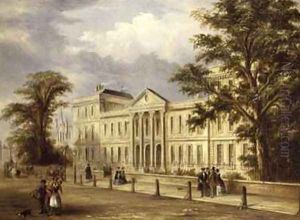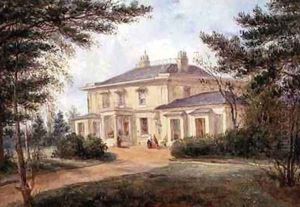Richard Harraden Paintings
Richard Harraden was a British artist and engraver, renowned for his contributions to the visual documentation of British landscapes, architecture, and historical scenes during the 18th and 19th centuries. Born in 1778, Harraden's career spanned a period of significant transformation in British art, coinciding with the Romantic era, which emphasized nature, emotion, and the sublime. His works are a testament to the evolving British taste and the growing interest in documenting the natural and built environment.
Harraden came from a family with artistic inclinations; his father, Richard Harraden the Elder, was also an engraver and publisher, which undoubtedly influenced the younger Harraden's career path. Richard Harraden's training and early work focused on engraving, a popular method of image reproduction before the advent of photography. This skill allowed him to capture the minute details of his subjects, ranging from the intricate facades of Gothic cathedrals to the serene beauty of the British countryside.
Throughout his career, Harraden not only produced original works but also engraved the works of other artists, thus contributing to the dissemination of contemporary and classical art styles. He was particularly known for his engravings of Cambridge, which were compiled into a book published in 1798. These engravings are of great historical value today, as they provide a detailed visual record of the architectural landscape of Cambridge at the turn of the 19th century.
Harraden's significance in the art world was also marked by his involvement with the Royal Academy. Although he never achieved the status of a full Royal Academician, his works were exhibited there, reflecting his recognition and respect among his peers. His legacy is not only in the beauty and precision of his engravings but also in his role in capturing the essence of his time, making his works an invaluable resource for historians and art lovers alike.
Richard Harraden passed away in 1862, leaving behind a rich portfolio that continues to be studied and appreciated for its artistic and historical value. His engravings, especially those of Cambridge and other significant British sites, remain sought after by collectors and are often featured in exhibitions focusing on the history of engraving and British art.

